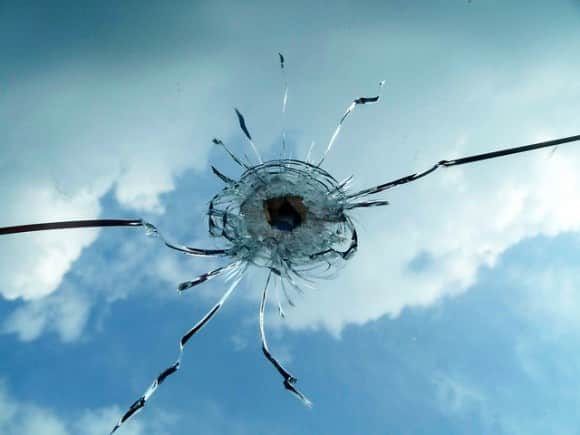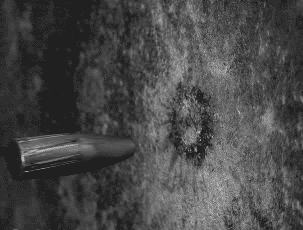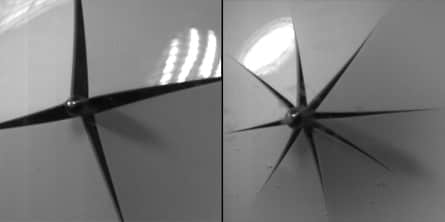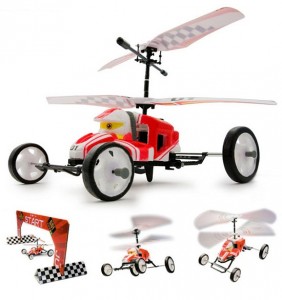Is it possible to measure the speed of an object which it hits by counting the number of cracks? Yes, it is. Cracks in glass can help scientists determine the speed of the object that hit it.
French scientists and researchers at Aix-Marseille University have discovered a relationship between a bullet’s speed and the number of cracks in a glass window where the bullet went through. By firing BBs, small metal cylinders from an air gun at different speeds at glass plates, researchers started to create an equation to calculate projectile speed.
Whenever a bullet or other blunt object pierces through glass or other brittle material, the energy expands outward over the glass, creating the familiar look of radial cracking patterns formed around the bullet hole. After shooting many BBs which were of various thicknesses and strengths at different speeds at over 100 plexiglass plates, the researchers concluded that the number of cracks tells us about how fast the bullet penetrated through. They created a “global scaling law” with the rule of thumb that the number of cracks double for every fourfold increase in a bullet’s or other object’s impact speed.
In this picture above, a BB hit a glass and created four cracks (left). By using the global scaling law researchers found that the BB hit the glass at 70 km/h speed. On the other side, another BB hit a glass and created eight cracks (right). By using the global scaling law researchers found that the BB hit the glass at 280 km/h speed.
No doubt, these findings could be useful to forensic scientists who want to determine the location of a shooter or determine the speed of a vehicle when it got shot at.
Source: io9
[ttjad keyword=”best-selling-gadget”]





